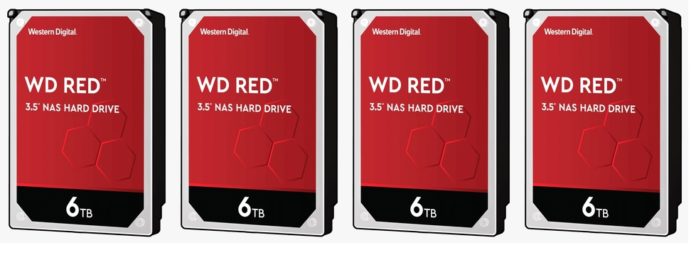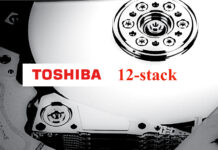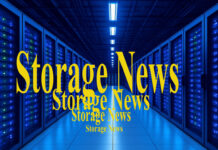Some users are experiencing problems adding the latest WD Red NAS drives to RAID arrays and suspect it is because they are actually shingled magnetic recording drives submarined into the channel.
Alan Brown, a network manager at UCL Mullard Space Science Laboratory, the UK’s largest university-based space research group, told us about his problems adding a new WD Red NAS drive to a RAID array at his home. Although it was sold as a RAID drive, the device “keep[s] getting kicked out of RAID arrays due to errors during resilvering,” he said.
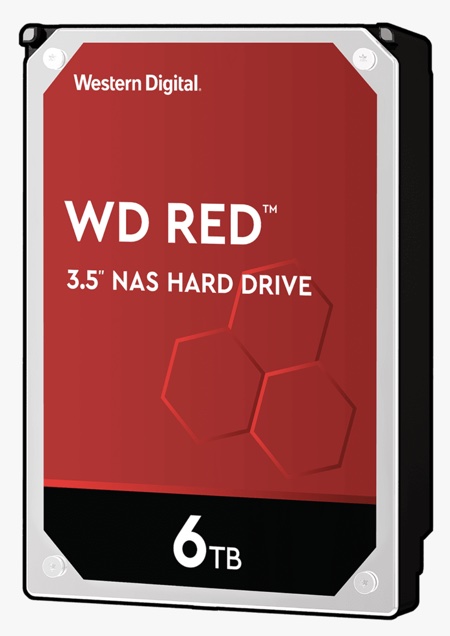
Resilvering is a term for adding a fresh disk drive to an existing RAID array which then rebalances its data and metadata across the now larger RAID group.
Brown said: “It’s been a hot-button issue in the datahoarder Reddit for over a year. People are getting pretty peeved by it because SMR drives have ROTTEN performance for random write usage.”
SMR drives
Shingled media recording (SMR) disk drives take advantage of disk write tracks being wider than read tracks to partially overlap write tracks and so enable more tracks to be written to a disk platter. This means more data can be stored on a shingled disk than an ordinary drive.
However, SMR drives are not intended for random write IO use cases because the write performance is much slower than with a non-SMR drive. Therefore they are not recommended for NAS use cases featuring significant random write workloads.
Smartmontools ticket
Brown noted: “There’s a smartmontools ticket in for this [issue] – with the official response from WDC in it – where they claim not to be shipping SMR drives despite it being trivial to prove otherwise.”
That ticket’s thread includes this note:
“WD and Seagate are _both_ shipping drive-managed SMR (DM-SMR) drives which don’t report themselves as SMR when questioned via conventional means. What’s worse, they’re shipping DM-SMR drives as “RAID” and “NAS” drives This is causing MAJOR problems – such as the latest iteration of WD REDs (WDx0EFAX replacing WDx0EFRX) being unable to be used for rebuilding RAID[56] or ZFS RAIDZ sets: They rebuiild for a while (1-2 hours), then throw errors and get kicked out of the set.”
(Since this article was published Seagate and Toshiba have also confirmed the undocumented use of shingled magnetic recording in some of their drives.)
The smartmontools ticket thread includes a March 30, 2020, mail from Yemi Elegunde, Western Digital UK enterprise and channel sales manager:
“Just a quick note. The only SMR drive that Western Digital will have in production is our 20TB hard enterprise hard drives and even these will not be rolled out into the channel. All of our current range of hard drives are based on CMR Conventional Magnetic Recording. [Blocks & Files emboldening.] With SMR Western Digital would make it very clear as that format of hard drive requires a lot of technological tweaks in customer systems.”
WD’s website says this about the WD Red 2TB to 12TB 6Gbit/s SATA disk drives: “With drives up to 14TB, the WD Red series offers a wide array of solutions for customers looking to build a high performing NAS storage solution. WD Red drives are built for up to 8-bay NAS systems.” The drives are suitable for RAID configurations.
Synology WD SMR issue
There is a similar problem mentioned on a Synology Forum where a user added 6TB WD Red [WD60EFAX] drive to a RAID setup using three WD Red 6TB drives [WD60EFRX] in SHR1 mode. He added a fourth drive to convert to SHR2 but conversion took two days and did not complete.
The hardware compatibility section on Synology’s website says the drive is an SMR drive:

The Synology forum poster said he called WD support to ask if the drive was an SMR or conventionally recorded drive: “Western Digital support has gotten back to me. They have advised me that they are not providing that information so they are unable to tell me if the drive is SMR or PMR. LOL. He said that my question would have to be escalated to a higher team to see if they can obtain that info for me. lol”
Also: “Well the higher team contacted me back and informed me that the information I requested about whether or not the WD60EFAX was a SMR or PMR would not be provided to me. They said that information is not disclosed to consumers. LOL. WOW.“
Price comparison
A search on Geizhals, a German language price comparison site, shows various disk drives using shingled magnetic media recording. Here, for example, is a search result listing for WD Red SATA HDDs with SMR technology. The result is:
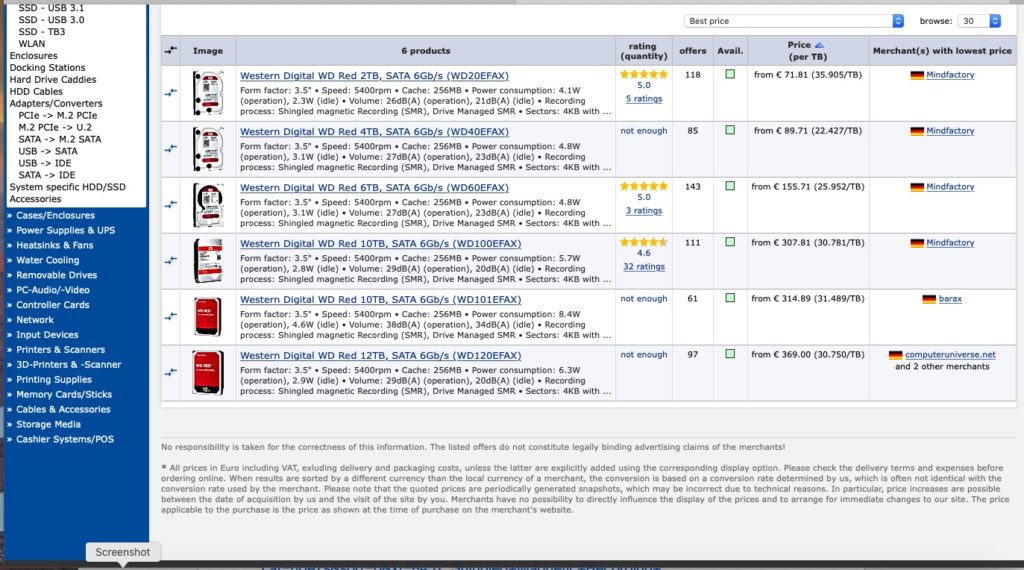
However, a WD Red datasheet does not mention SMR recording technology.
WD comment
We brought all these points to Western Digital’s attention and a spokesperson told us:
“All our WD Red drives are designed meet or exceed the performance requirements and specifications for common small business/home NAS workloads. We work closely with major NAS providers to ensure WD Red HDDs (and SSDs) at all capacities have broad compatibility with host systems.
“Currently, Western Digital’s WD Red 2TB-6TB drives are device-managed SMR (DMSMR). WD Red 8TB-14TB drives are CMR-based.
“The information you shared from [Geizhals] appears to be inaccurate.
“You are correct that we do not specify recording technology in our WD Red HDD documentation.
“We strive to make the experience for our NAS customers seamless, and recording technology typically does not impact small business/home NAS-based use cases. In device-managed SMR HDDs, the drive does its internal data management during idle times. In a typical small business/home NAS environment, workloads tend to be bursty in nature, leaving sufficient idle time for garbage collection and other maintenance operations.
“In our testing of WD Red drives, we have not found RAID rebuild issues due to SMR technology.
“We would be happy to work with customers on experiences they may have, but would need further, detailed information for each individual situation.”
Comment
Contrary to what WD channel staff have said, the company is shipping WD Red drives using SMR technology. (Since publication of this article, Western Digital has published a statement about SMR use in 2TB-6TB WD Red NAS drives.)
WD told us: “In a typical small business/home NAS environment, workloads tend to be bursty in nature, leaving sufficient idle time for garbage collection and other maintenance operations.”
Not all such environments are typical and there may well not be “sufficient idle time for garbage collection and other maintenance operations”.
We recommend posters on the Synology forum, data hoarder Reddit and smartmontools websites to get back in touch with their WD contacts, apprise them of the information above and let them know that WD is “happy to work with customers on experiences they may have”.


